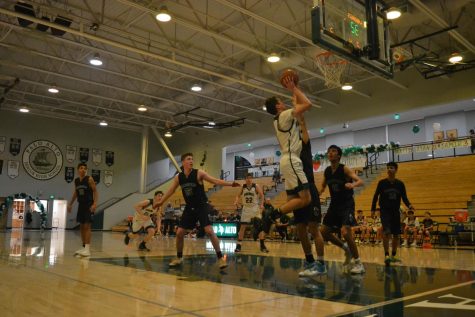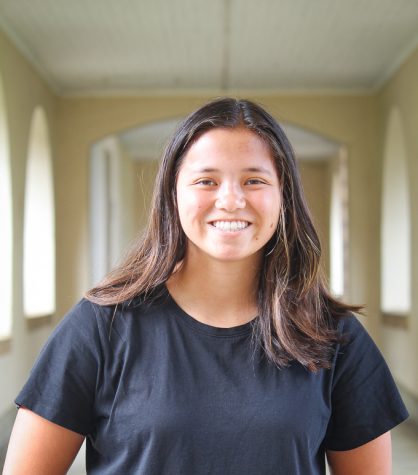Athletic guidelines set stage for indoor sports, spark confusion
March 14, 2021
Editor’s note: A previous edition of this article stated that masks are required, instead of required as tolerated. This has since been updated.

In California’s recent bombardment of mixed messages and new guidelines on athletics, indoor sports are permitted to begin competition, but not without further confusion and strict regulations.
Palo Alto High School Athletic Director Nelson Gifford has been working to grapple with California’s shifting guidelines around athletics, and responded to the widespread confusion in the Paly athletics community through a newsletter Wednesday.
On March 4, the state announced that all indoor sports teams can return to competing if they follow the additional requirements for collegiate sports, which includes regular COVID-19 testing, contact tracing protocols and coordination with local health authorities.
On March 5, Santa Clara County decided to align with the state. However, the fate of season three indoor sports is still up in the air, according to Paly boys’ volleyball coach Ed Yeh.
“We just had a meeting yesterday [March 8] about seasons and practices, and nothing is guaranteed right now,” Yeh said. “But the coaches and the [athletic director] really want to get a season for everybody, so that’s our goal.”
Due to the COVID-19 testing requirement, to be eligible to compete, all athletes who play high-risk contact sports that are not already authorized in the county must provide a negative test result within 48 hours of any competition. According to Gifford, the testing requirement could be a difficult obstacle to overcome.
“It’s celebrated for about five minutes, and then you see the guidance, and you recognize that it’s not viable, not for 99% of high schools,” Gifford said. “There still seems to be a lot of uncertainty and need for clarification by everyone involved from the highest section officials on down. I don’t know if there’s an intention for the state to provide support for this sort of testing or if it’s just going to have to be independently funded.”
The California Department of Public Health defines high-risk contact sports as basketball, field hockey, football, lacrosse, soccer, volleyball, water polo and wrestling. However, the guidelines also state that for outdoor contact sports, only football, water polo and rugby have a testing requirement when a county has an adjusted case rate between seven and 14 per 100,000.
According to Gifford, the outdoor contact sports currently in season — soccer, football and field hockey — are unlikely to be affected by the new addition to the guidelines.
“One of the questions that they’re trying to make sure is, do the testing requirements, as are defined right now, actually have implications to the outdoor high contact sports,” Gifford said. “The prevailing opinion is no, that those policies have already been put in place… and that the subsequent policies apply strictly to indoor sports.”
The state’s newest update also introduced new language around the mask-wearing requirement. According to Gifford, masks are to be worn during heavy exertion as tolerated.
“Masks are highly suggested … are they a requirement like a helmet in football, no,” Gifford said. “It doesn’t answer anybody’s question, and that’s part of the struggle, right, I can’t measure your ability to tolerate a mask.”
According to Yeh, despite the tenuous path towards a shot at having a season, the ever-changing guidelines still point towards a grim future for boys’ volleyball and all other indoor sports.
“The news has been inconsistent, so it’s hard to be optimistic,” Yeh said. “It really is day to day. Nobody really knows how we’re going to pull it all together.”
Additionally, for badminton and girls’ volleyball, the delayed season two sports, the Santa Clara Valley Athletic League plans to save their seasons, but the logistics of pushing it back pose a challenge, according to Gifford.
“It’s a moving target, right, we really don’t know what’s going to happen,” Gifford said. “I think there was an intention to try to start the season just like two weeks later so that it didn’t overlap entirely with season three… but now they may have to push it all the way to season three, and we’re just going to have to deal with the consequences.”
Despite the lingering uncertainty faced by indoor sport athletes, the gradual shifts in the guidance have permitted more sporting activities, allowing teams greater freedom in practice. Senior boys’ basketball player Aidan Rausch said the shift back to playing contact basketball has brought him more hope of having a season.
“I feel like many people, especially seniors, have been wondering if it’s really worth it to keep practicing if our season is unlikely to happen,” Rausch stated in a message. “Now that we can scrimmage, and playing a basketball season is becoming more and more likely, morale and excitement is up. Allowing scrimmaging really changed a lot. I am thrilled to even be scrimmaging, and I know many people are as well.”








![A protester in a chicken suit wearing a taco hat with the words “Cluck Trump” at the “No Kings” Democracy Fair in Palo Alto on Saturday. Protestor Mary Chan said she and her husband are horrified at the state of science and medicine in America. “What he [Trump] is doing by defunding scientific research is destroying our academic medical centers, and he’s [Trump] bankrupting rural medical centers,” Chan said. “We will have lasting negative impacts on American health for decades.”](https://palyvoice.com/wp-content/uploads/2025/10/11562FFE-9912-4152-BB01-582426B52ECB_1_105_c-225x300.jpeg)